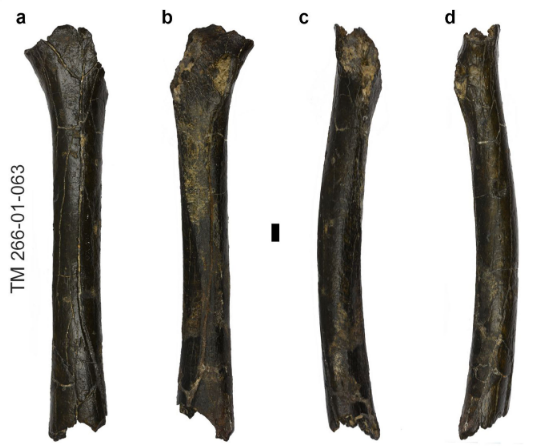Together with Orrorin and Ardipithecus, Sahelanthropus has been considered one of the three taxa known as “early hominins”, belonging to the tribe Hominini, the closest relatives to humans. However, due to the fragmentary nature of the fossil remains, the hominin status of Sahelanthropus has been largely debated since it was discovered in 2001 in the Djurab Desert, Chad.
The species was described from the remains of an exemplar named Toumaï, which means "hope of life" in the local language. Its cranium has become a key piece for the study of human evolution. Although we do not have much information about this hominin, we know that it lived in present-day Central Africa. At that time, it was a region with a great diversity of environments, ranging from grasslands and savannas to gallery forests and lakes inhabited by fish, crocodiles, and hippos, among other animals.
Apart from the cranium, only three postcranial fossils have been recovered: two ulnae and a femur. The latter only preserves the shaft, that is, there are no proximal or distal ends, which are usually the most informative regions in the long bones. Based solely on the shape and structure of the Sahelanthropus diaphysis, a study published in 2022 proposed that this femur shows anatomical features that indicate habitual bipedalism, suggesting that hominins were already bipedal around 7 million years ago.


Imatge 1. Original postcranial material from Toros-Ménalla, Chad. On the left, the femur of Sahelanthropus tchadensis and on the right, one of the ulnae (right). Scale bar 10 mm. Modified from Daver et al. (2022). DOI: https://doi.org/10.1038/s41586-022-04901-z
Now, a study led by Max Planck Institute for Evolutionary Anthropology in Leipzig, in collaboration with the Institut Català de Paleontologia Miquel Crusafont (ICP) in Catalonia, and other institutions from different countries, questions whether Sahelanthropus regularly walked upright on its two hind limbs. Through a detailed analysis of the external morphology and internal architecture of the femur diaphysis, the research team has revealed a series of characteristics that are not compatible with habitual bipedal behavior.
“No femoral features directly related to either australopiths or recent humans were found. To the contrary, the Sahelanthropus femur presents some traits more similar to those of nonhominin hominoids such as gibbons, orangutans, and gorillas," says Marine Cazenave, Junior Leader at the Department of Human Origins at the Max Planck Institute and lead author of the study.
The article shows that the postcranial remains of Sahelanthropus point to a locomotor modes other than bipedalism. "The research provides new evidence to progress in the controversial discussion about the features distinguishing the Late Miocene apes from the earliest members of the human lineage and about the origin of “habitual bipedalism”. However, to this day, how Sahelanthropus moved remains still a matter of research," explains Marta Pina, 'Beatriu de Pinós' researcher at the ICP.
Main image: Partial view of the late Miocene site in the Djourab Desert, Chad, photographed on July 19, 2001 (by A. Beauvilain). On the right, illuminated, the partial femur attributed to Sahelanthropus tchadensis.
Original article:
- Cazenave, M., Pina, M., Hammond, A.S., Böhme, M., Begun, D.R., Spassov, N., Gazabón, A.V., Zanolli, C., Bergeret-Medina, A., Marchi, D., Macchiarelli, R., Wood, B., 2024. Postcranial evidence does not support habitual bipedalism in Sahelanthropus tchadensis: A reply to Daver et al. (2022). Journal of Human Evolution 103557. https://doi.org/10.1016/j.jhevol.2024.103557















